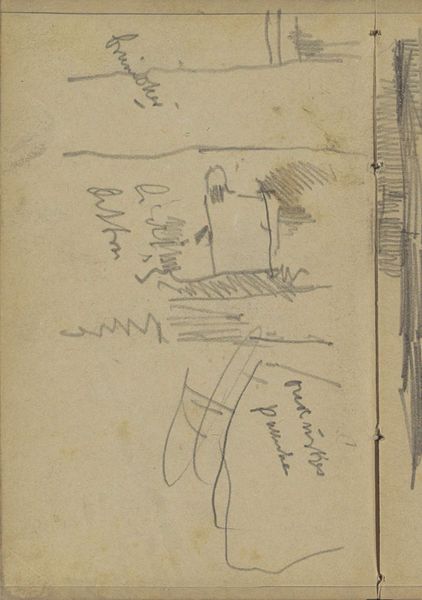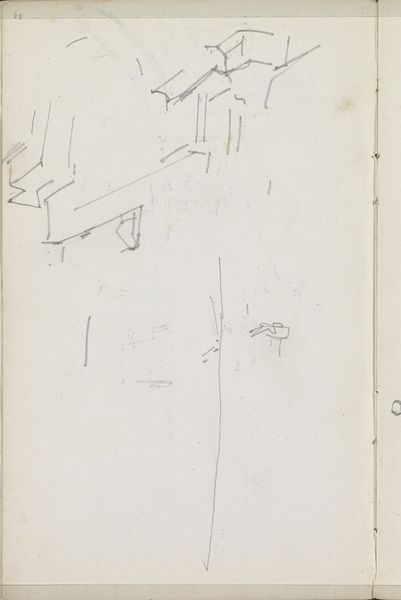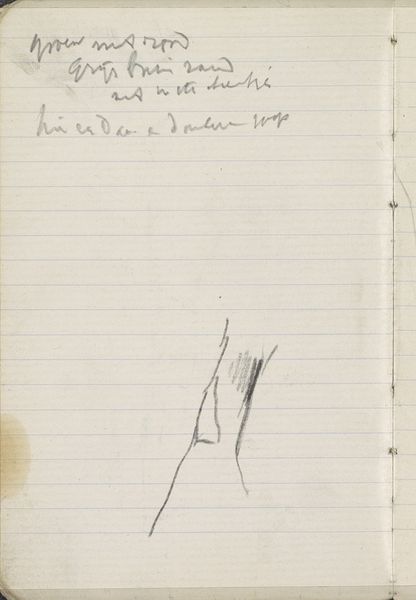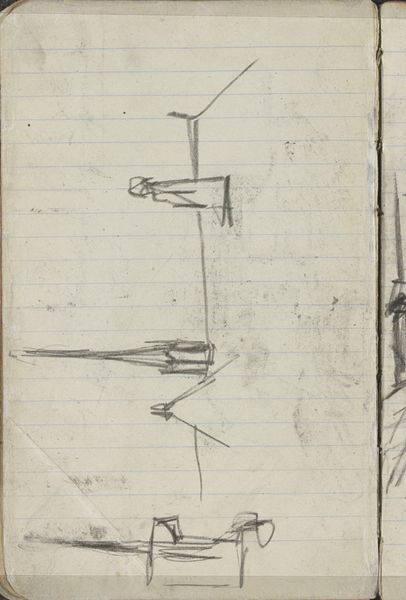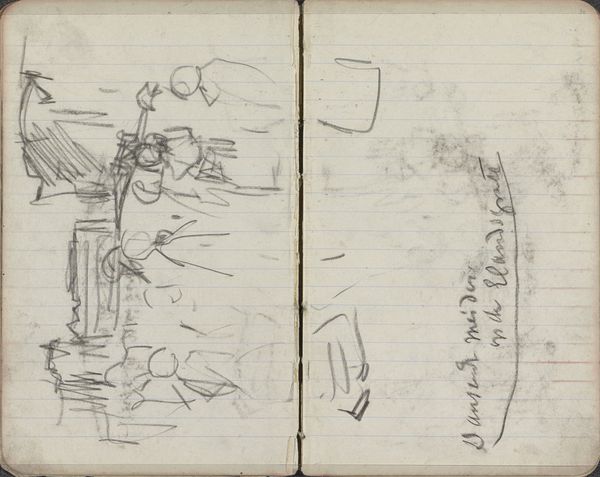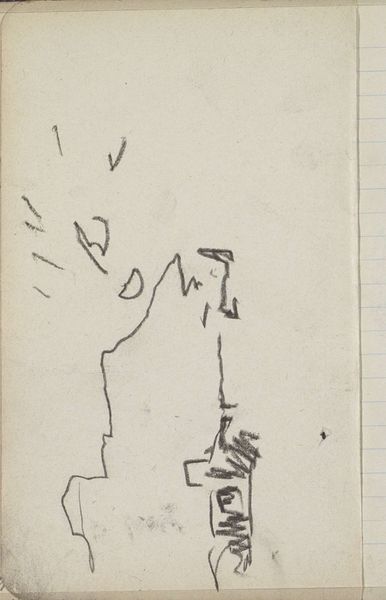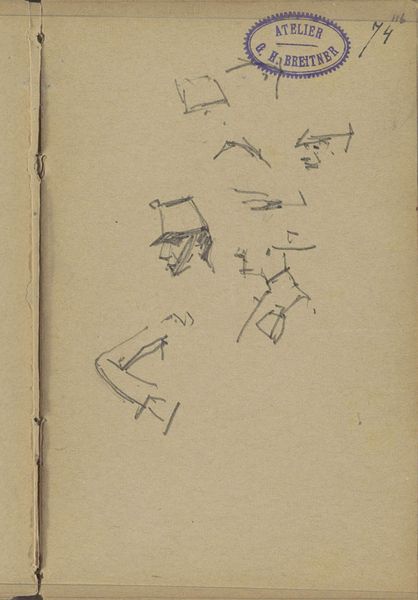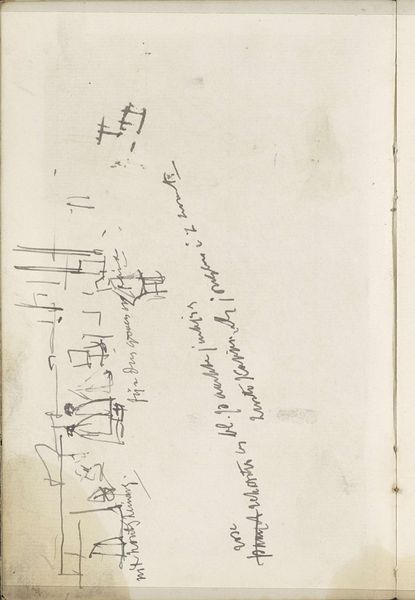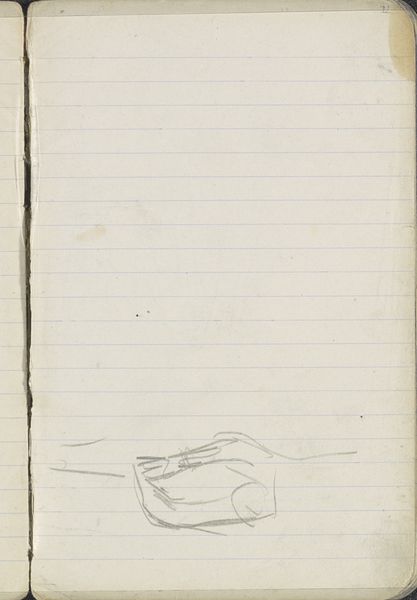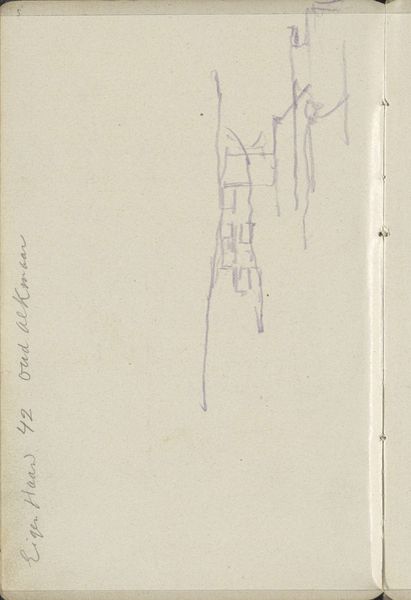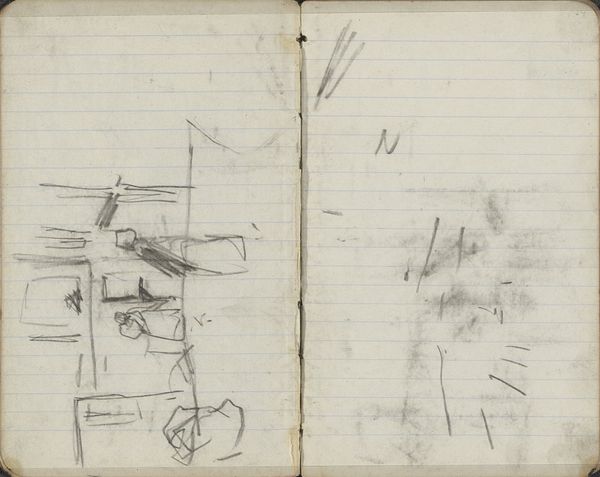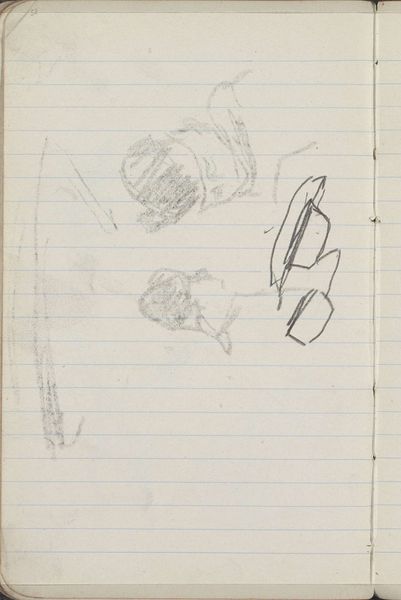
Copyright: Rijks Museum: Open Domain
Curator: Breitner's "View of the Rokin in Amsterdam," likely created between 1896 and 1901, offers us an intriguing glimpse into his working process. Editor: My first impression? There’s a fragility, a sketch-like quality to the marks. You feel the fleeting moment, an ephemeral capturing of a specific place. Curator: Indeed. Look closely at the materiality. The swift, yet deliberate strokes of pencil on paper are indicative of Impressionism, prioritizing immediacy and personal expression over meticulous detail. We might also read the city as an element in constant change. Editor: Note the image, even in its relative lack of precise finish, carries a palpable sense of memory, a residue of place. Is this "Rokin" a prominent street, a thoroughfare laden with associations? A deeper understanding of that location infuses meaning. We should perhaps address that even its sketch-like aspect can lend immediacy in that sense. Curator: Absolutely, its form, or lack thereof, lends authenticity. The sparseness urges viewers to actively construct the scene with their own memory. Its unfinished aspect is paramount to accessing emotional associations. This echoes what we find in pointillist practices such as Seurat, whereby lack of fine detail engages the subject more than precise realism. Editor: Consider the buildings here. The very sparseness forces the observer to engage with fundamental aspects such as proportion, relationships between voids and shapes that invoke both recognition and curiosity. It beckons an attempt at deeper familiarity with its formal space in a non-rhetorical form. Curator: It allows us a window into a distilled impression of place and location. He provides merely the bare minimum in spatial features, and through formal brevity asks for an interpretive interaction with viewers who can construct a new, lived-in space within the sketched form. Editor: Ultimately, this piece is an artifact which connects past perceptions with present engagement, so the image echoes outward as its sketched materiality embodies an invitation to both decode the past through iconographic knowledge and participate in a newly interpreted present. A compelling combination.
Comments
No comments
Be the first to comment and join the conversation on the ultimate creative platform.
